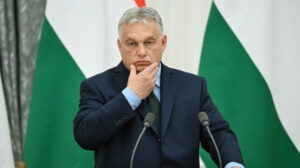The first posthumous exhibition of Takis in Paris, after his death in 2019, began on November 20 in collaboration with the Foundation bearing his name. Titled “The Void,” the exhibition showcases the iconic “Signals” that have captivated visitors from around the world, revealing the artist’s talent and extraordinary genius.
This exhibition is specifically dedicated to the relationship that developed between the Greek sculptor (1925-2019) and the City of Light. Born in Athens, Takis moved to Paris in 1954, drawn by the artistic movements of the time. There, he formed a friendship with Italian sculptor Alberto Giacometti and was deeply influenced by Alexander Calder and Jean Tinguely, partner of Niki de Saint–Phalle.

In 1955, Takis drew inspiration from the Calais railway station and began creating his famous “Signals.” In 1958, he experimented with magnets as a medium to represent the fourth dimension in relation to the forces of the universe.
Many of Takis’ “Signals” bear resemblance to the Cycladic figurines of Ancient Greece, with solid bases, electronic equipment, and fragments at their ends. Additionally, Takis explored “Telemagnetic” Signals and sculptures.
The “The Void” gallery presents an extensive collection of these works, using metals, screws, and technological materials as spiritual objects that touch the Infinite, yet are not necessarily bound to the Earth. Takis believed that “the magnet and the attraction of love are one and the same.” Thus, upon returning to Paris from Massachusetts in 1974, he created a series of bronze sculptures representing both male and female figures, evoking archaeological digs from his homeland, Greece. The artist, always fascinated by the unseen, the modern, the interpersonal, and the metaphysical, made significant contributions to both the fields of art and scientific thought.

The “The Void” gallery, by positioning Takis among his friends and acquaintances, highlights his broader contribution to the artistic life of Paris. The exhibition sheds light on the various influences he experienced throughout his life, often returning to them as a point of reference, drawing inspiration and ideas that he would later develop alone in his studio.
The exhibition in Paris will run until January 11, 2025.
Ask me anything
Explore related questions





